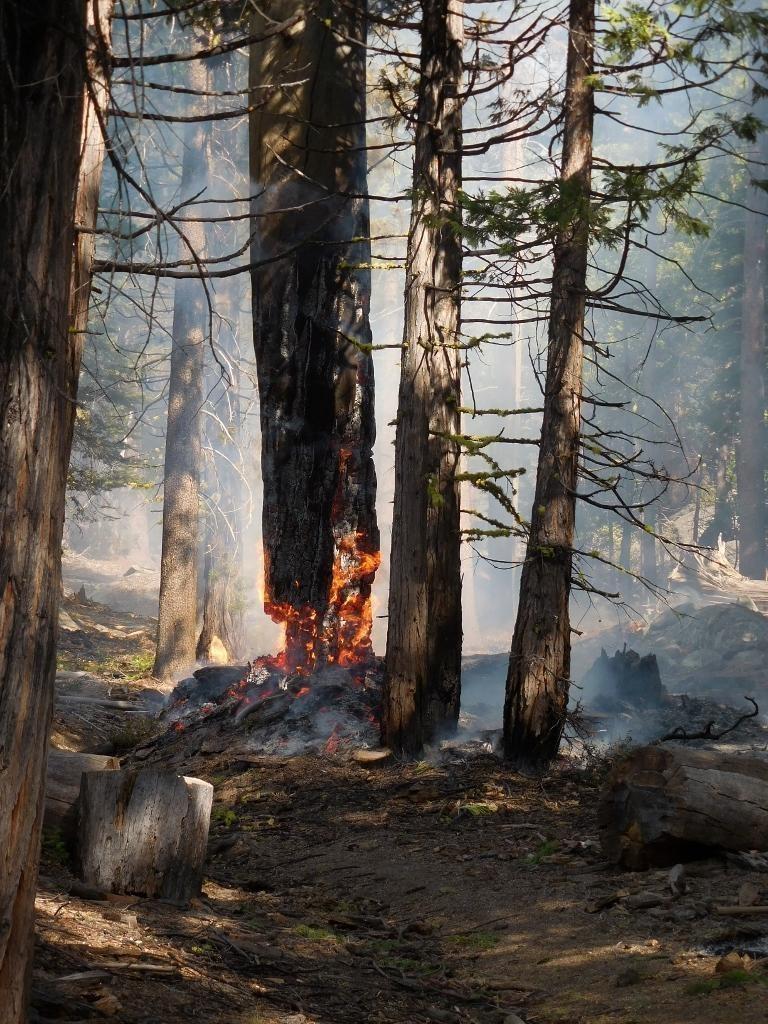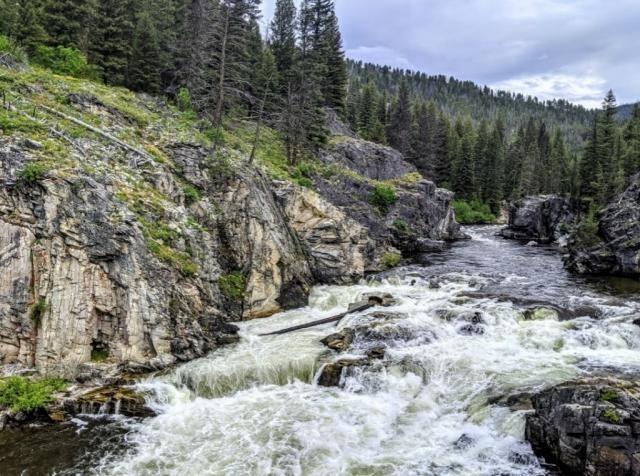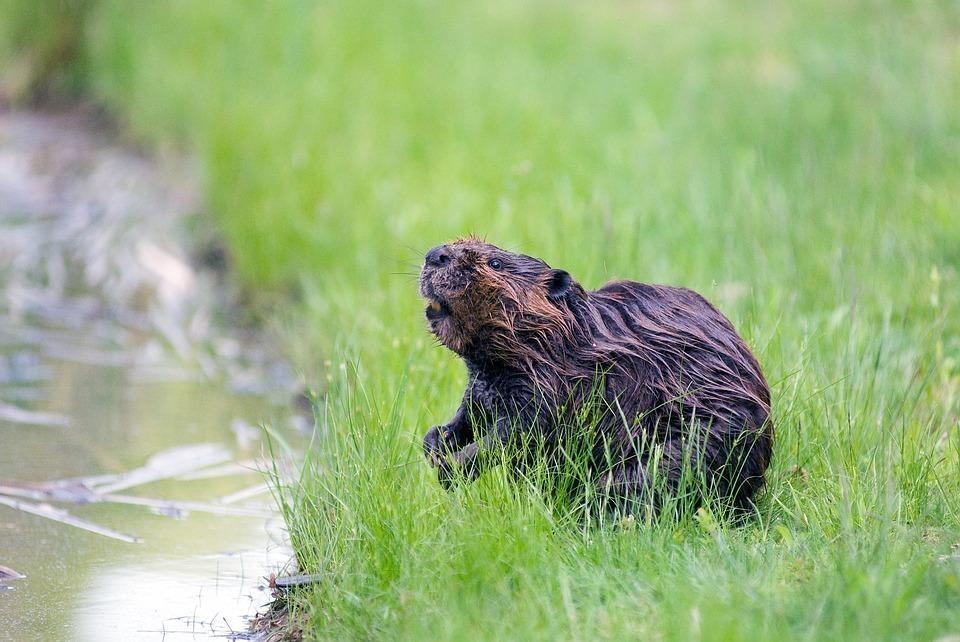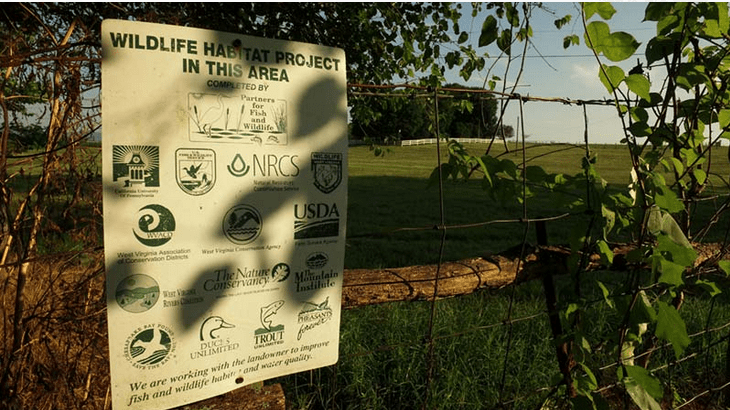Temperance Flat Dam on Hold
An investment analysis that looked at how much it would cost water users to build and operate the proposed Temperance Flat Dam northeast of Fresno without government funding was
finished earlier this year and quietly passed among water districts, which just as quietly asked the federal government to shelve work on the project. Read More
Caples Ecological Restoration Project
A century of fire exclusion from Caples Creek drainage has led to higher fuel loading and tree density, which has increased the risk of high intensity wildfire. An important community water supply serving 110,000 people in the El Dorado Irrigation District is threatened, and the condition of meadows, streamside corridors, and aspen stands has declined. This project will complete 25 miles of prescribed fire containment line in preparation for 8,800 acres of burning. The project includes 4,400 acres of lower elevation understory burning, 4,400 acres of burning in vegetative islands mixed with rock at higher elevation, 25 acres of aspen restoration activities, and 25 acres of meadow restoration activities.

Caples Fire Effects
Caples Fire First Order Fire Effects. Preliminary Estimate of Burn Severity, Tree Mortality, and Fuel Consumption. Scott Dailey, USFS Enterprise Program
The Caples fire occurred in 2019 as part of the Caples Watershed Restoration project. A controlled burn was initiated at the end of September and classified as a wildfire in early October. The Fire Behavior Assessment Team (FBAT) has been in operation since 2003 and is a Multi-agency group of Fire/fuels managers, and fire scientists. Their task is to collect fire behavior and fire effects data for various objectives and agencies.

Salmon Extinction in Idaho?
by Chris Wood June 24, 2020
Our iconic Snake River chinook salmon are down to less than 1 percent of their historic numbers.
With a few real exceptions, juvenile smolts in Idaho rear in some of the West’s best habitat, but on their way to the Pacific Ocean they must traverse eight dams, including four on the lower Snake River.
How do those dams impact their survival? A recent study used various approaches to estimate Snake River dam-related mortality and averaged their estimates with other comparable studies. The study confirms what scientists have been saying for decades. Read More
Summer Steelhead Return to Elwha

No hatchery was used to produce summer-run steelhead. All it took was unimpeded access to the ocean for these amazing fish to reappear. And, let’s remember, this resurgence happened during a period of poor ocean conditions that have depressed other salmon and steelhead runs up and down the West Coast.
Caples Creek Signage

A limited set of angler surveys have been performed to determine angler success and fish density on Caples Creek. Surveys have not been beneficial as few anglers have been encountered at the trailheads. Readers are encouraged to fish Caples Creek and report their success on the Contact Us page. Favorite spots will not be revealed.
Working With Nature

Nearly everyone agrees that Western rangelands will produce even larger and more frequent wildfires in the future. But are engineered fuel breaks the best answer?
Jack Williams, a scientist who worked for multiple federal agencies and Trout Unlimited says, “The primary culprit for larger fires in the Great Basin is cheatgrass, but warming temps compound the problem. Creating periodic firebreaks would help by breaking up and slowing down the flames. We can do that in a way that benefits the natural systems by expanding riparian and wet meadows along our small streams.”
The answer may be a small dose of much less expensive firebreaks and, surprisingly, strategies involving cows and beavers. Ranchers who fence streamside areas and/or rotate cows to rest pastures occasionally and allow streamside vegetation to grow back help re-establish natural firebreaks of lush green vegetation.
Grazing and Beavers to Restore Riparian Vegetation

The objective of many BLM management efforts is to shift streams that have been degraded by stressors such as drought, wildfire, and historical grazing practices from a non-functioning designation to a proper functioning designation, and then make sure they stay that way. But how exactly do you do that, especially for such a massive landscape?
Land managers are increasingly turning to two natural approaches to restore degraded riparian areas and improve stream habitats, a one-two punch involving grazing management and beaver. New research led by TU scientists and BLM biologists shows just how effective these can be. Read More
California Rivers Endangered
Friends of the River Director Ron Stork identifies many current actions by the government which endanger our California Rivers. Read his February "River Currents" .
Congress Passes Natural Resource Act
Thanks to the bipartisan work of Sens. Lisa Murkowski (R-AK) and Maria Cantwell (D-WA), and other senators, the Natural Resources Management Act passed the Senate Tuesday evening (Feb. 12). The bill bundles together over 100 pieces of legislation that in many cases have languished for years.
Among other things, the bill permanently authorizes the Land and Water Conservation Fund, a popular program for acquiring new public lands and access for hunting and fishing, without costing taxpayers a dime. The bill also protects iconic rivers such as the North Umpqua, Rogue, Chetco and Elk in Oregon, and headwater streams to the Yellowstone River in Montana.
Who Pays to Play?
Sportsmen and women pay the bulk of the money to fund state wildlife agencies. Is it time for other outdoor users to pony up, too? Randy Scholfield, TU’s director of communications for the Southwest, has some thoughts for change. A Colorado fishing license is his Golden Ticket, after all—the Keys to the Kingdom—bestowing on me rights to fish our state’s world-class public waters. It’s an incredible bargain, even with the fee increase, and a smart investment in the future health of these irreplaceable resources. But one thought kind of nags at me: Why should anglers and hunters bear so much of the financial burden of supporting our state’s fish and wildlife habitat? Who Pays to Play
Page 3 of 4

